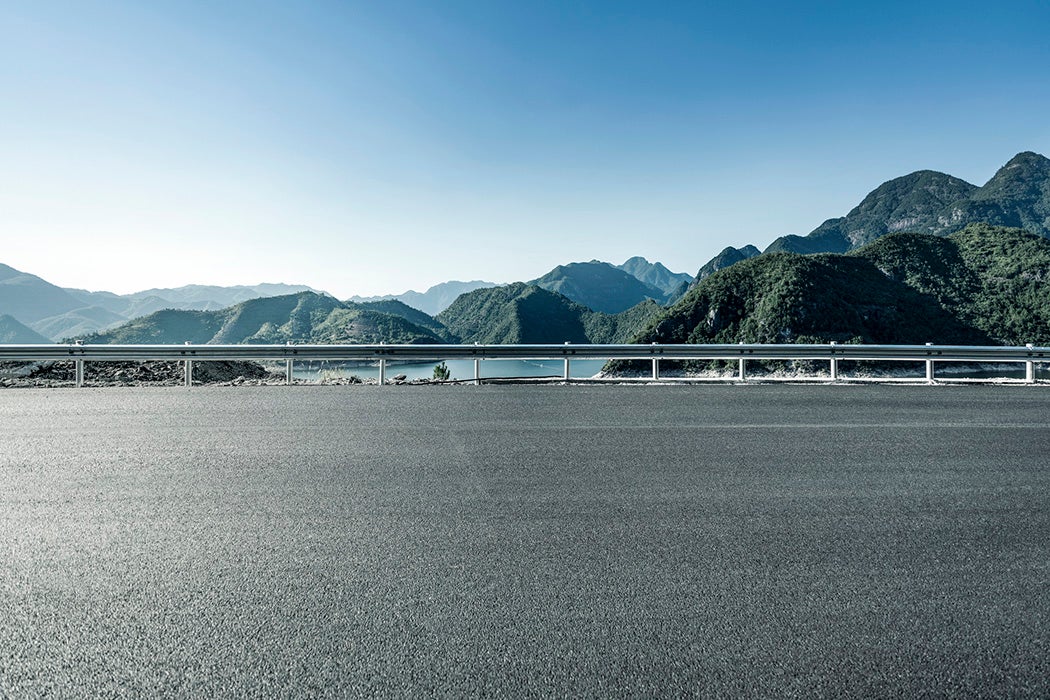Welcome to JSTOR Daily’s Planet-Conscious Weekly Summer Travel Series! From electric cruise ships to eco-tourism, we have been investigating better, more sustainable ways to travel and interact with the world.
This June, a crew of road workers in Zermatt, an Alpine Swiss town known as a haven for skiing and hiking, laid a new type of road—a plastic one. The road wasn’t built entirely of plastic, of course. But along with the typical paving materials such as stone and sand, Zermatt’s mix included additives from discarded plastic.
Scientists recently estimated that humans have produced 8.3 billion metric tons of plastic to date—25,000 times the weight of the Empire State Building. Seventy-nine percent of that mass ended up in landfills or the ocean. That flow of plastic continues, wreaking havoc in marine ecosystems. Birds and fish can mistake it for food and gobble up the broken shreds, filling their stomachs with debris or choking on it. Large pieces, free-floating in the waves, may help invasive species hitchhike across the ocean. Recently, scientists found that chemicals leaching out of plastic are killing the ocean’s invisible forests—tiny but important photosynthetic bacteria Prochlorococcus that produce about ten percent of all the oxygen we breathe. Despite recycling efforts, eight to 12 million tons of plastic litter still flushes into the ocean every year. According to some estimates, 60 to 80 percent of marine plastic comes from waste sites, industrial and manufacturing sites, stormwater and sewage spills, and even tourist activities. Landfilled plastic isn’t without problems either. As it breaks down, it leaches chemicals into the soil and groundwater that can harm wildlife or make their way into the human food chain.
Scottish company MacRebur is developing a new way to reuse this plastic as paving material. Road surface pavements like tarmac or asphalt are typically made by mixing construction materials such as sand, gravel or stone with bitumen—a black, viscous, hydrocarbon goo generated by oil refineries. The bitumen acts as a binder holding all the particles together. But bitumen and plastic have certain similarities—they are both made from oil and have comparable binding qualities. Toby McCartney, an engineer and now MacRebur’s CEO, devised a way to make household and industrial plastic waste into small pellets, which can be added to the road-paving mix, producing a tar-like surface. The plastic additives don’t diminish the road quality. On the contrary, they help make the surface more flexible and therefore more durable, with fewer potholes. For Zermatt, where temperatures plummet to -20C in winter and spike to +30C in summer, MacRebur’s plastic pavement works perfectly.
Weekly Newsletter
Switzerland isn’t the only country forging roads from plastic debris. In India’s Tamil Nadu State, over 9,900 miles of road have been paved with a plastic mix. In Australia, 16 miles north of Melbourne, a road has been made from Reconophalt, a combination of asphalt and recycled materials, including 200,000 plastic bags, 63,000 glass bottles, and waste toner from 4,500 printer cartridges. And as more and more of these plastic roads appear around the world, they will all lead to a cleaner ocean.







